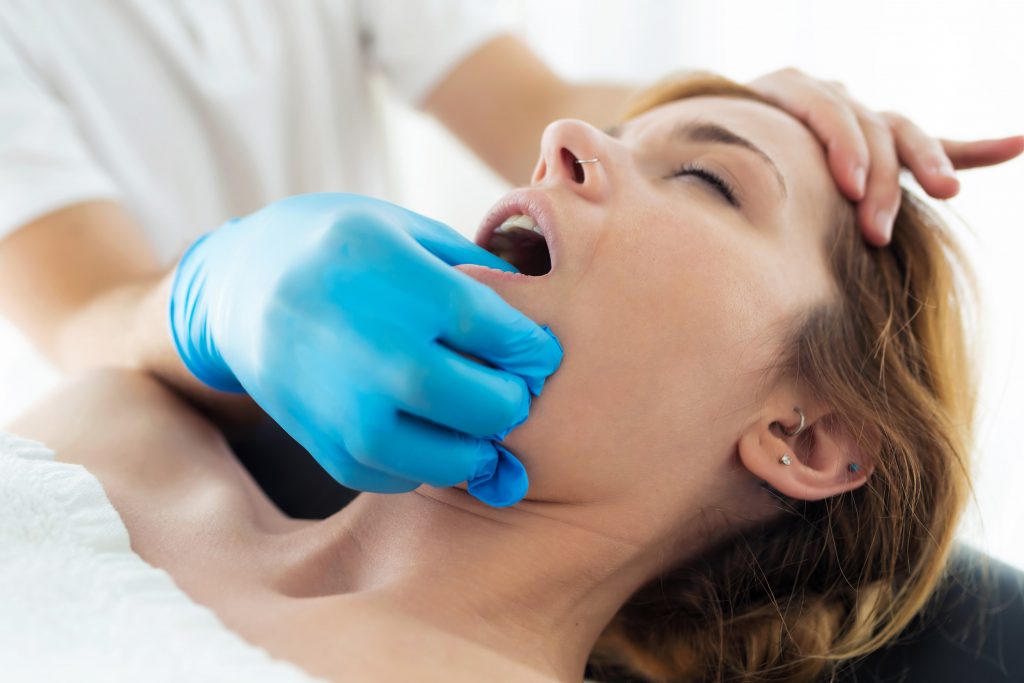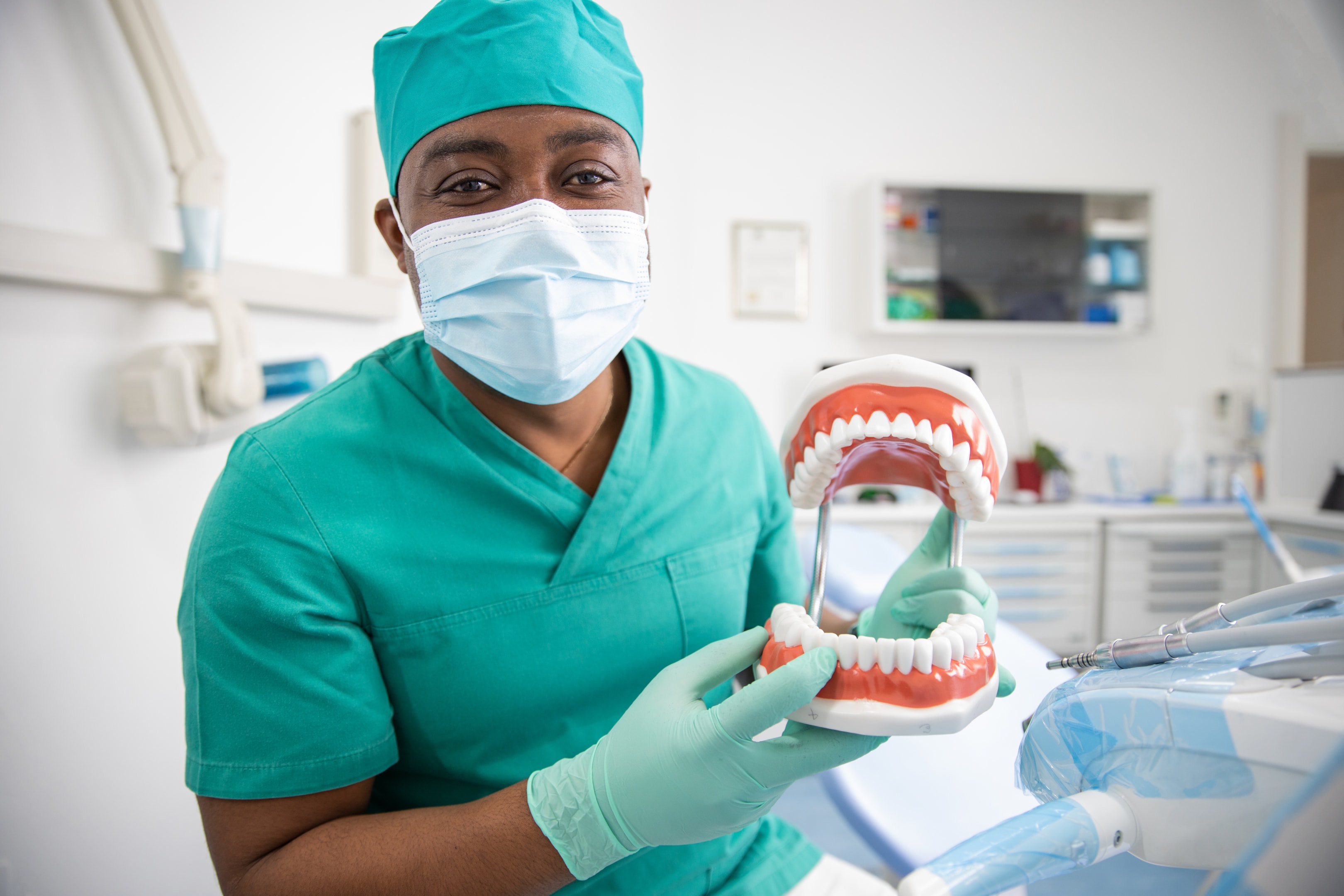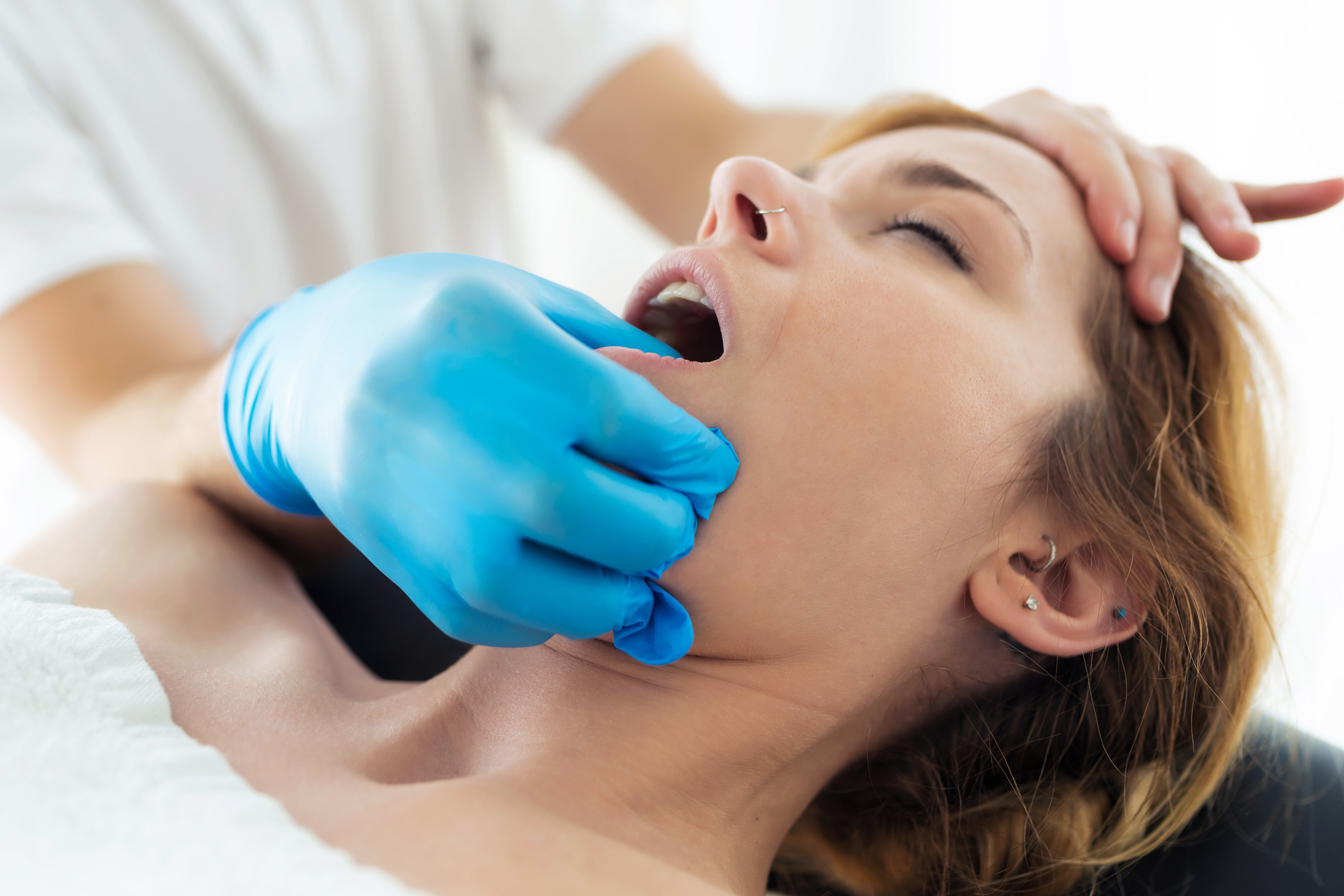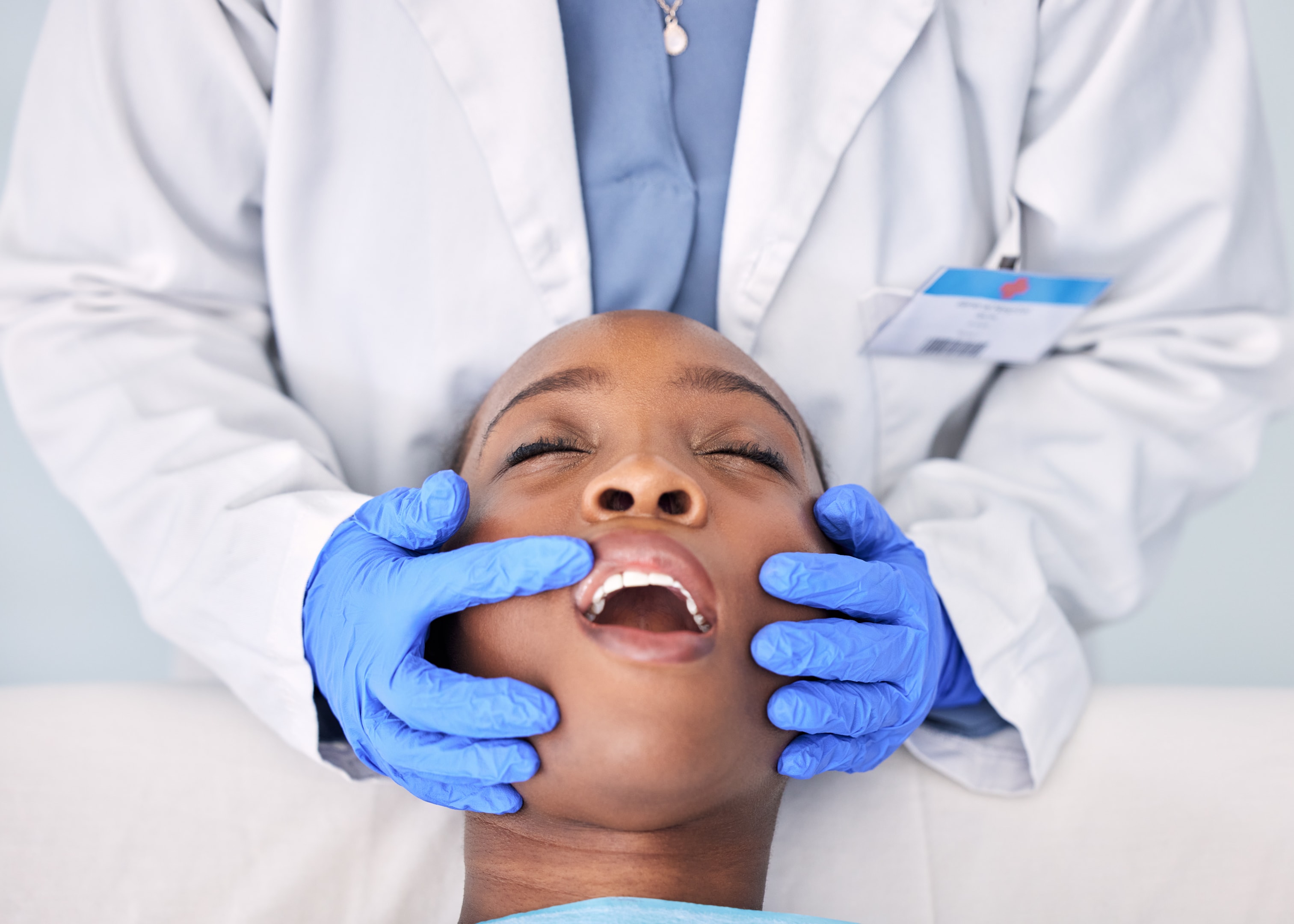


Imagine you’re an architect, and your jaw is the foundation of your smile, speech, and even how you breathe. Now, what happens if that foundation isn’t aligned properly? Just like a building might need structural adjustments to stand strong, your jaw might need corrective surgery to function at its best. That’s where corrective jaw surgery comes into play, with the recovery process being the key to ensuring long-term success.
In this blog, we’ll take a deep dive into the reasons you might need corrective jaw surgery, what the recovery process looks like, and how Mahogany Oral Surgery, located just outside Calgary, AB, will be with you every step of the way. We’ll cover what the surgery entails, the crucial role of your oral surgeon, and provide some tips to make your recovery as smooth as possible.
Why Corrective Jaw Surgery? Understanding the Need for Treatment
If you think about it, your jaw is more than just a bone holding your teeth in place. It’s a critical player in your daily life, affecting everything from how you chew your food to the way you speak. When your jaw is misaligned, it can lead to a host of issues – both functional and aesthetic. Orthodontic treatment is often necessary to prepare for corrective jaw surgery, ensuring that your teeth are properly aligned before, during, and after the surgical process.
Corrective jaw surgery can help improve your facial balance, giving you the confidence to smile more freely. Orthognathic surgery is often part of the treatment process to align the upper and lower jaws, involving multiple stages including pre-surgical orthodontics, the surgical procedure, and post-operative recovery.
Functional Problems: More Than Meets the Eye
Misaligned jaws can cause severe problems, including difficulty in chewing, chronic jaw pain, and even obstructive sleep apnea. Lower jaw surgery and upper jaw surgery can correct these functional issues. You might not realize it, but these issues can have a domino effect on your overall health. For example, if you’re constantly chewing with a misaligned bite, you could end up with worn-down teeth, leading to more extensive dental work down the road.
Dr. Graham cobb, an oral surgeon, emphasizes, “Corrective jaw surgery isn’t just about aesthetics; it’s about restoring balance and functionality to a key part of your anatomy.”
Practical Tip:
If you’re experiencing chronic jaw pain or difficulty chewing, consult with an oral surgeon to determine if jaw misalignment is the root cause.
Aesthetic Concerns: The Confidence Boost You Deserve
For many, the decision to undergo corrective jaw surgery stems from concerns about their appearance. A misaligned jaw can lead to asymmetry, which might affect your confidence. Chin surgery, also known as genioplasty, can correct a small or deficient chin. Corrective jaw surgery can help improve your facial balance, giving you the confidence to smile more freely.
In addition to restoring function, this surgery can be a life-changing boost to your self-esteem. At Mahogany Oral Surgery, we understand the emotional toll that jaw misalignment can take and strive to deliver results that enhance both form and function.
Practical Tip:
If you feel self-conscious about your facial symmetry, a consultation with an oral surgeon can provide you with options that might include corrective jaw surgery.
The Corrective Jaw Surgery Recovery Process: What to Expect

Recovery from corrective jaw surgery is akin to running a marathon – it requires preparation, perseverance, and patience. Knowing what to expect can help you navigate the process more comfortably and with greater peace of mind. Emphasizing the importance of smooth jaw surgery recovery, we provide tips aimed at helping you achieve a smoother and more efficient recovery process.
Immediately After Surgery: The First Few Days
The first few days after your surgery are the most critical. Your jaw will be swollen, and you might experience discomfort or pain. Managing jaw movement is crucial during this period to ensure proper healing. But don’t worry – this is all part of the healing process. Your oral surgeon will likely prescribe medication to manage pain and reduce swelling.
During this time, you’ll likely be on a liquid diet since chewing could interfere with the healing process. This is especially important for the lower jaw, which may have been surgically adjusted. It might sound daunting, but it’s temporary and essential for proper recovery.
Practical Tip:
Stock up on high-calorie, nutrient-rich liquids like smoothies, broths, and protein shakes before your surgery to ensure you get the nutrition you need.
Weeks 1-4: Gradual Healing and Adjustments
As you move past the first week, the swelling will start to subside, but your jaw will still be healing. You may begin incorporating soft foods like mashed potatoes, oatmeal, or scrambled eggs into your diet. Gradually transition to eating soft meats like chicken and fish to facilitate jaw movement recovery while being cautious to avoid fatigue. It’s important to follow your oral surgeon’s instructions closely during this time to avoid complications.
Your oral surgeon will schedule follow-up appointments to monitor your progress. These appointments are vital as they allow your surgeon to make any necessary adjustments to your treatment plan.
Practical Tip:
Keep a journal of your recovery, noting what you eat, any discomfort, and how your swelling changes. This can help your surgeon make informed decisions during follow-up visits.
Months 2-6: Building Strength and Returning to Normalcy
By the second month, you should be feeling much more like yourself, though your jaw will continue to heal over the next several months. You can slowly start incorporating more solid foods into your diet as your oral surgeon gives the green light. The recovery process involves careful management of the upper and lower jaws to ensure proper healing. Physical therapy may also be recommended to help restore full movement and strength to your jaw muscles.
During this period, it’s crucial to maintain good oral hygiene. Brush gently around the surgical site and use any prescribed mouth rinses to keep the area clean and free of infection.
Practical Tip:
As you transition back to regular foods, take it slow. Chew carefully, and avoid hard or chewy foods until your surgeon confirms that your jaw is fully healed.
The Role of Your Oral Surgeon in a Successful Recovery

Your oral surgeon plays a pivotal role throughout the corrective jaw surgery process, from the initial consultation to the final follow-up visit. At Mahogany Oral Surgery, our team is dedicated to providing comprehensive care to ensure the best possible outcome.
Pre-Surgery Planning: Tailoring the Approach
Before surgery, your oral surgeon will conduct a thorough examination, which may include X-rays, 3D imaging, and physical evaluations. This helps in creating a customized surgical plan that addresses your specific needs. At Mahogany Oral Surgery, we believe in involving our patients in every step of the process to ensure they understand the procedure and feel confident in their treatment plan.
Practical Tip:
Prepare a list of questions or concerns to discuss during your pre-surgery consultation. Being informed can help ease any anxiety about the procedure.
Post-Surgery Support: More Than Just a Follow-Up
After surgery, your oral surgeon will guide you through the recovery process, providing detailed instructions on care, diet, and activities to avoid. At Mahogany Oral Surgery, we pride ourselves on our patient-first approach, meaning we’re always available to answer your questions and address any concerns that arise during recovery.
Regular follow-up appointments are critical as they allow your surgeon to monitor your healing and make adjustments if needed. Your oral surgeon is your partner in this journey, ensuring you stay on the right path toward full recovery.
Practical Tip:
Don’t hesitate to reach out to your oral surgeon if something feels off during your recovery. Early intervention can prevent minor issues from becoming major complications.
Managing Pain and Discomfort During Recovery

Pain management is a significant aspect of the corrective jaw surgery recovery process. While discomfort is a natural part of healing, there are effective ways to manage it.
Medication: Following the Doctor’s Orders
Your oral surgeon will most likely prescribe pain medication to help manage discomfort during the first few days after surgery. It’s essential to take these medications as directed to stay ahead of the pain.
Over-the-counter pain relievers may also be recommended as you progress in your recovery. Always consult with your oral surgeon before making any changes to your pain management regimen.
Practical Tip:
Set reminders on your phone to take your medication on time, ensuring consistent pain control.
Non-Medical Pain Relief: Adding Extra Comfort
In addition to medication, there are non-medical methods to help ease discomfort. Applying cold compresses to the outside of your jaw can reduce swelling and numb the area, providing temporary relief. Elevating your head while resting can also help reduce swelling.
Relaxation techniques like deep breathing, meditation, or listening to soothing music can help distract from pain and reduce stress, promoting a faster recovery.
Practical Tip:
Invest in a good quality cold compress or gel pack before your surgery. It will be your best friend in the early days of recovery.
Nutrition During Recovery: Eating for Healing
Proper nutrition is critical to a smooth recovery after corrective jaw surgery. Since your diet will be limited initially, focusing on nutrient-dense liquids and soft foods is essential. Proper nutrition supports the healing of the upper teeth and jaw.
Liquid Diet: The First Step
For the first week or two after surgery, you’ll be restricted to a liquid diet. This isn’t just about avoiding chewing; it’s about ensuring your body gets the nutrients it needs to heal. Smoothies packed with fruits, vegetables, protein powder, and healthy fats are a great way to get a balanced meal in a glass.
Mahogany Oral Surgery recommends preparing a variety of liquids in advance, so you’re not stuck with the same options every day. This variety can make a huge difference in maintaining your appetite and mood during recovery.
Practical Tip:
Add leafy greens or protein powder to your smoothies for an extra nutritional boost. Don’t forget to drink slowly to avoid disturbing your jaw.
Transitioning to Soft Foods: Patience is Key
Once your oral surgeon gives the green light, you can start adding soft foods to your diet. Think mashed potatoes, yogurt, scrambled eggs, and well-cooked pasta. These foods require minimal chewing, which is crucial while your jaw is still healing.
It’s important to introduce new foods gradually. Your jaw might feel stiff or uncomfortable at first, so take small bites and chew slowly.
Practical Tip:
Create a meal plan for the soft food stage of your recovery. Planning your meals ahead can reduce stress and ensure you’re eating a balanced diet.
Long-Term Care: Ensuring Lasting Results
Even after the initial recovery phase, caring for your jaw and overall health is vital to ensuring the long-term success of your surgery.
Regular Check-Ups: Staying on Track
Regular follow-up appointments with your oral surgeon are essential, even months after your surgery. These visits allow your surgeon to monitor your jaw’s healing and make sure everything is progressing as expected. At Mahogany Oral Surgery, we focus on long-term care, ensuring that our patients achieve and maintain the best possible outcomes.
Practical Tip:
Set up your follow-up appointments in advance and mark them on your calendar to avoid missing any crucial check-ups. Consistent monitoring by your oral surgeon is key to catching any issues early and keeping your recovery on the right path.
Maintaining Good Oral Hygiene: A Lifelong Commitment

After corrective jaw surgery, maintaining good oral hygiene is more important than ever. Proper brushing, flossing, and regular dental cleanings will help protect your investment in your jaw’s health. Your oral surgeon or dentist may recommend special tools or techniques to keep your teeth and gums in top shape, especially if your jaw alignment has changed significantly.
Good oral hygiene not only protects your teeth and gums but also supports the overall health of your jaw. At Mahogany Oral Surgery, we encourage our patients to maintain a routine that keeps their oral health in check.
Practical Tip:
Invest in an electric toothbrush and a water flosser to make cleaning around any surgical areas easier and more effective.
Long-Term Diet Considerations: Eating for Health
While your diet will expand as you fully recover, it’s wise to continue making choices that support your jaw’s health. Avoiding overly hard or chewy foods can prevent unnecessary strain on your jaw. Additionally, maintaining a balanced diet rich in vitamins and minerals will support the health of your bones and muscles, including your jaw.
Your oral surgeon can provide guidelines on any long-term dietary adjustments you should consider. Keeping these tips in mind will help you enjoy the benefits of your surgery for years to come.
Practical Tip:
Incorporate calcium-rich foods like dairy, leafy greens, and fortified plant-based options into your diet to support bone health and strength.
Conclusion: Your Path to a Healthier, Happier Jaw

Corrective jaw surgery is a significant step toward improving both the function and appearance of your jaw. While the road to recovery can be challenging, knowing what to expect and having the support of a skilled oral surgeon can make all the difference. At Mahogany Oral Surgery, located just outside Calgary, AB, our dedicated team of oral surgeons is committed to guiding you through each phase of the process, from the initial consultation to long-term care.
Remember, recovery from corrective jaw surgery is a journey, not a sprint. With patience, proper care, and regular check-ups, you can look forward to a future with a healthier, more aligned jaw. Whether you’re dealing with functional issues or aesthetic concerns, corrective jaw surgery offers the potential for life-changing results.
As Dr. Graham Cobb puts it, “The success of corrective jaw surgery isn’t just in the operating room—it’s in the days, weeks, and months of thoughtful recovery and care that follow.”
So, take that first step toward a better quality of life by scheduling a consultation with Mahogany Oral Surgery. Your journey to a healthier, more confident you is just beginning.


